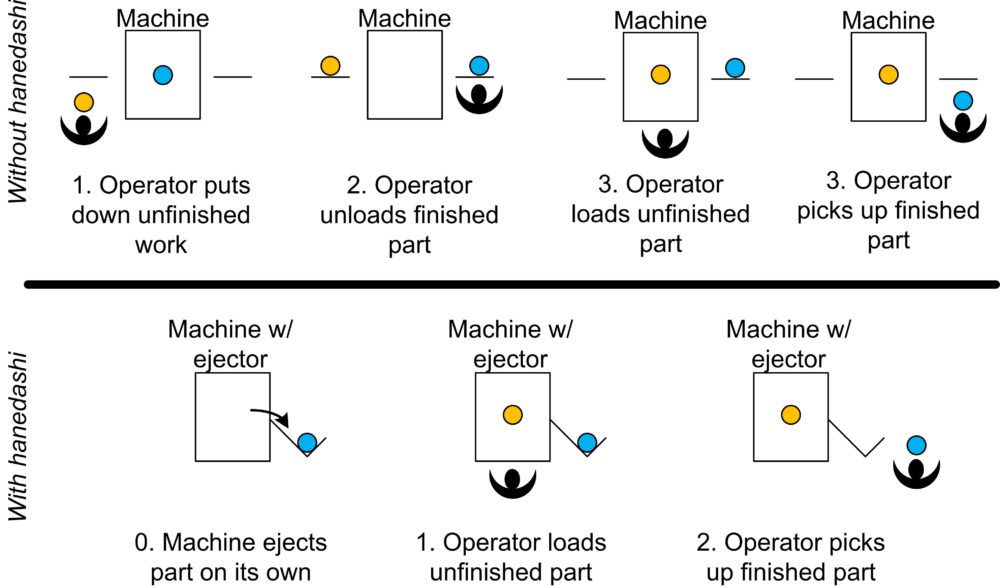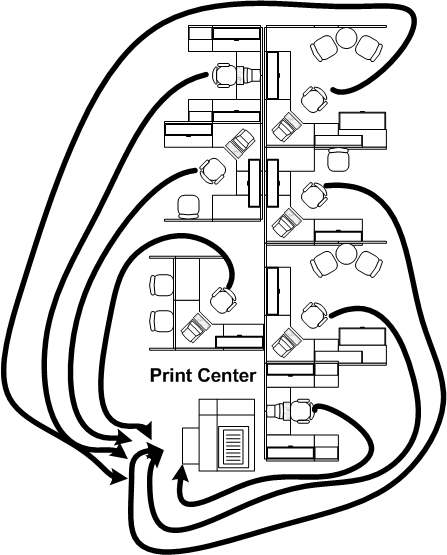Chaku-Chaku
A chaku-chaku line has a series of machines, each equipped with a hanedashi device, or autoejector. This enables the operator working a chaku-chaku line to: walk up and immediately insert the part he is holding into a machine press a start button, and then pick up the previously ejected part. Read more…






